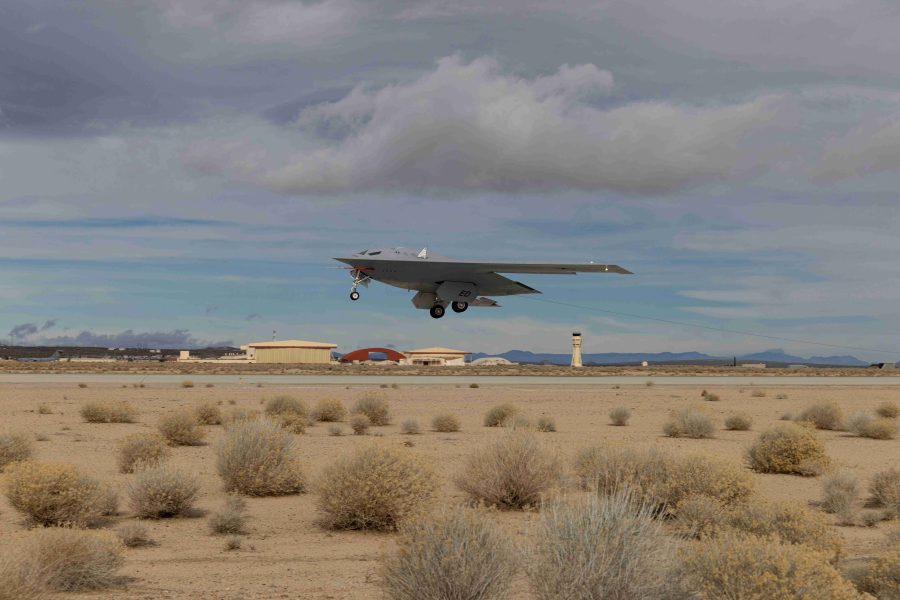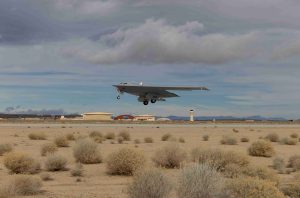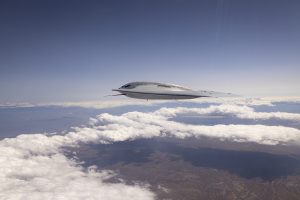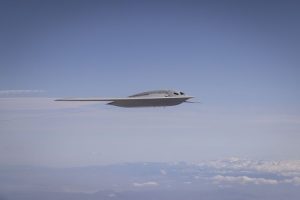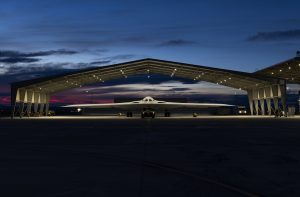Editor’s Note: This story was updated May 23 with an additional photo.
Just over six months after the B-21 Raider made its first flight in November 2023, the Air Force has released three images of the bomber going through testing at Edwards Air Force Base, Calif. A day later, manufacturer Northrop Grumman released another in-flight image. They are the only images of flight testing released so far.
The two Air Force in-flight images are in left profile; one showing the bomber taking off and one in flight at altitude, with the landing gear retracted. The third is a head-on shot of the bomber inside a hangar at Edwards. The Northrop photo shows the aircraft in the air in right profile.
Metadata from the photos indicates they were taken Jan. 17, May 22, and April 4, respectively, confirming that the B-21 has made at least two flights since its first on Nov. 10, 2023.
The Air Force declined to say how many total flights the aircraft has made, nor will it provide any kind of timetable of the anticipated test flight program.
Together, the three images offer only slightly more information about the aircraft than could be gleaned from unofficial photos taken of the first flight and circulated on the internet.
The takeoff image shows a very narrow, 2-D exhaust embedded in the jet’s tail. The broad, narrow exhaust is distinct from that on the B-2, the B-21’s elder stablemate, which had a more boxy, sugar-scoop exhaust. The B-21 exhaust suggests more attention to fanning out the aircraft’s heat to reduce its infrared signature, as well as keep its profile slim to defeat radar.
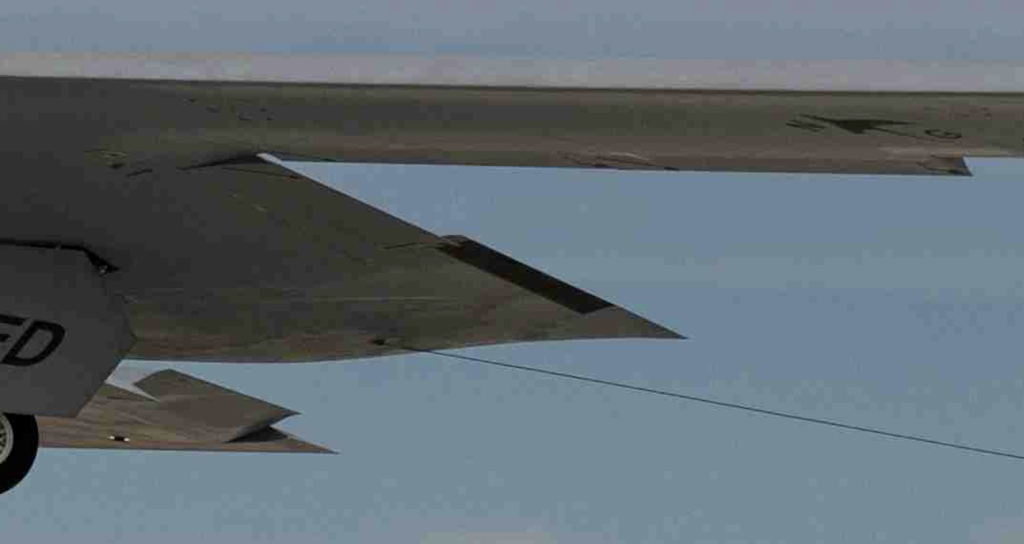
A lack of blackening around the exhaust could simply be an indication that the aircraft hasn’t flown very often, but it could also indicate that exhaust heat is somehow cooled inside the aircraft before being discharged as thrust. On the F-117 and B-2, this was accomplished with the use of panels very like Space Shuttle thermal tiles, which capture heat and only slowly release it.
An auxiliary air inlet can be seen, opened above the engines to provide them with more air as the jet rotates its nose up. This is necessary because of the top-mounted main air intakes, which would receive reduced air at high angle of attack. A similar, but more scalloped feature is present on the B-2.
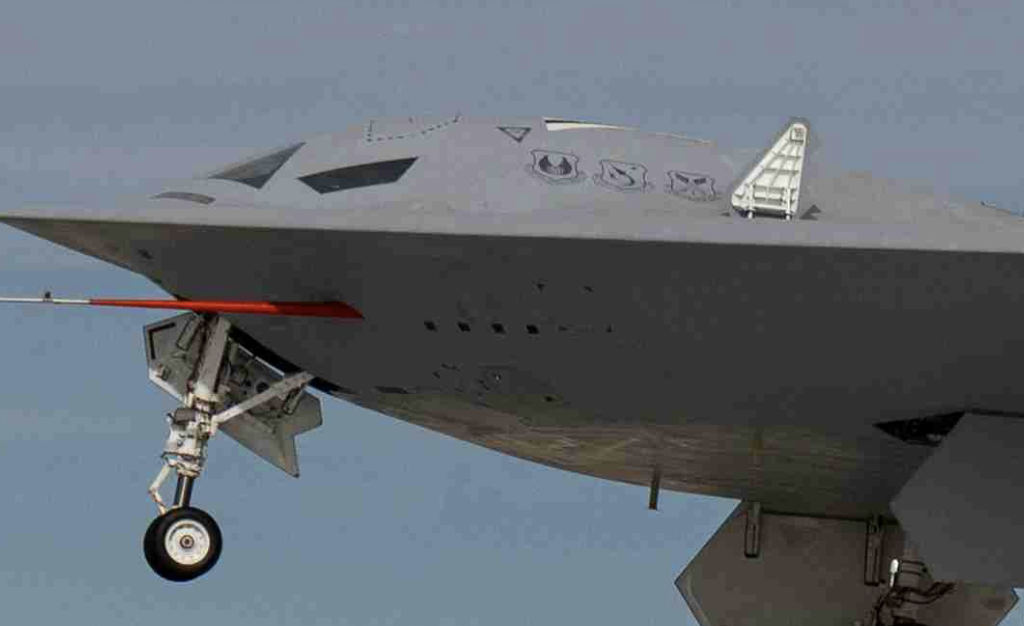
Behind the cockpit is the heraldry of Air Force Materiel Command, the 412th Test Wing, and Global Strike Command. The “fuselage” serial number of the aircraft (0001) is visible, but it lacks the typical year of acquisition.
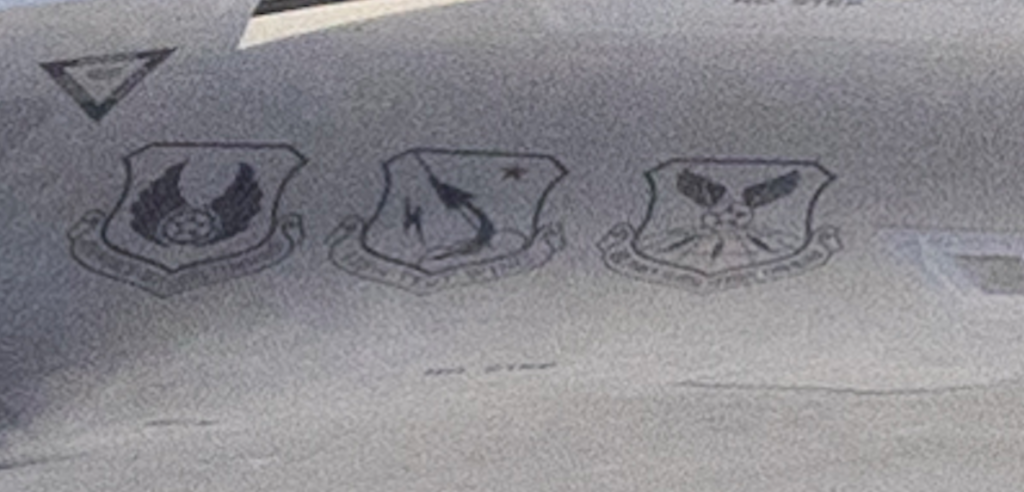
A long patch, in a different, darker color than the rest of the aircraft, is visible on the upper surface, roughly where the engine hot section should be. It’s adorned with a forward-pointing arrow and two apparent diamond-shaped vents are next to it. The forward part of the patch is sawtooth-shaped, a common practice in stealth aircraft where there is a surface discontinuity.
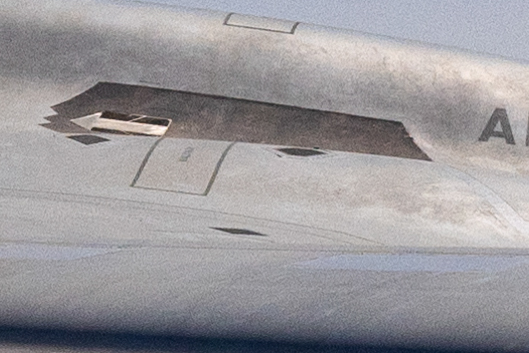
Pop-up navigation lights are visible on the outer wing, likely only used for operations in ATC-controlled airspace and clearly retractable to make the aircraft more stealthy.
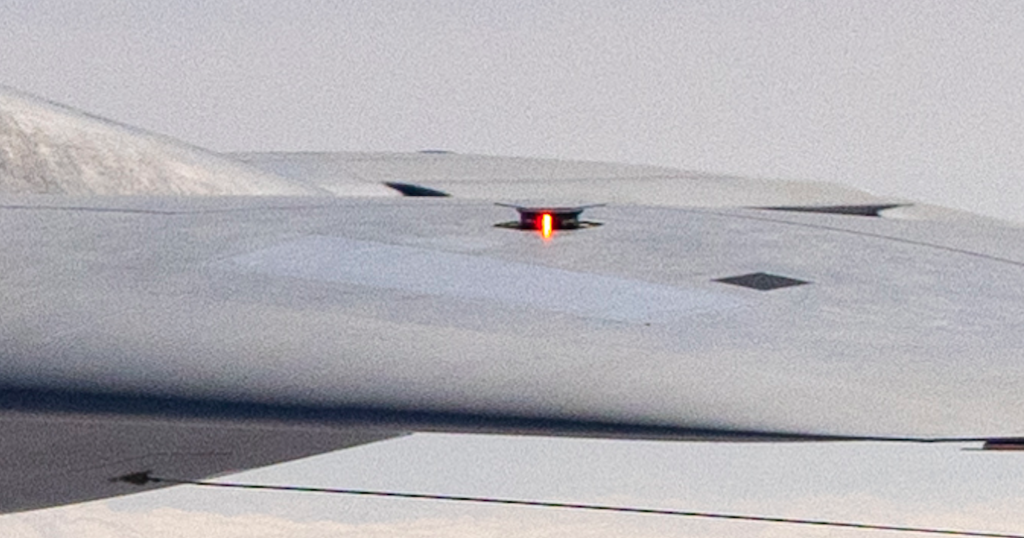
Along with the images, an accompanying release from 412th Test Wing at Edwards reiterated comments made by Air Force acquisition executive Andrew Hunter earlier this month that the B-21’s test flight program “is proceeding well.”
“It is doing what flight test programs are designed to do, which is helping us learn about the unique characteristics of this platform, but in a very, very effective way,” Hunter told lawmakers on the Senate Armed Services Committee on May 8.
Hunter also said the B-21’s design is “more digital than not.”
The release also stated that the B-21 will “incrementally replace the B-1 and B-2 bombers” now operated by the Air Force. The service recently told Air and Space Forces Magazine the B-21 will not necessarily replace the B-1 and B-2 on a one-for-one basis as the new bombers become available, but Global Strike Command has said it does not expect to have the money and manpower to field four different types of bombers at the same time. The plan is to neck down to a fleet of just B-21s and B-52Js after the B-1s and B-2s retire.
The Raider was described by the Air Force as a “long-range, highly-survivable, penetrating strike stealth bomber” which will “play a major role supporting national security objectives and assuring U.S. allies and partners across the globe.” It is “expected to enter service in the mid-2020s with a production goal of a minimum of 100 aircraft.”
Air Force Chief of Staff Gen. David Allvin said recently that the pace at which new technology is becoming available could mean the service moves on to a more advanced design, and that 100 aircraft may be the final fleet size for the B-21.
Northrop received a low-rate initial production contract for the B-21 in December, following first flight. The company has said it will not make any money on the first five lots of the B-21, mainly because of inflation and escalated labor costs.
The Air Force noted in its release that the initial flight test aircraft are being manufactured on the same tooling and with the same personnel as will be used for production of operationally-configured Raiders. The test aircraft are also intended to have test apparatus removed and be configured as operational aircraft after the flight test effort concludes.
